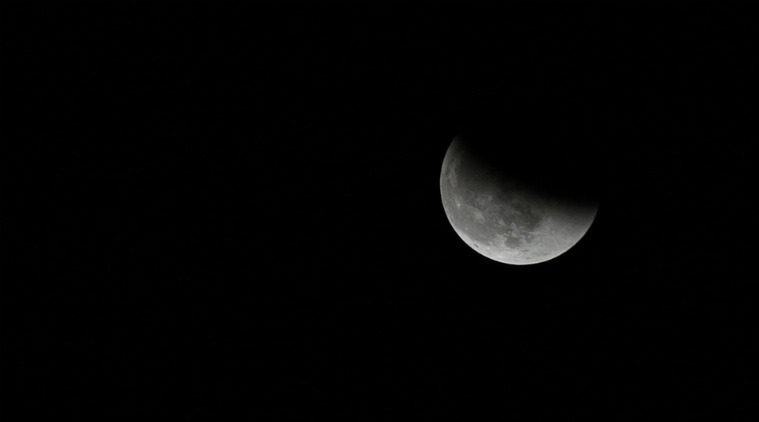 Lunar Eclipse 2020 Highlights: Timings, all about penumbral lunar eclipse
Lunar Eclipse 2020 Highlights: Timings, all about penumbral lunar eclipse
Lunar Eclipse 2020 Today Live Updates: Today is the third lunar eclipse of 2020. However, for people in India, the penumbral lunar eclipse may not be visible as it will take place in the day time. It will be difficult for Indians to witness the phenomenon.
Countries that will be able to observe the phenomenon clearly are South/West Europe, parts of Africa, parts of North America, South America, Pacific, Atlantic, Indian Ocean and Antarctica. Similar to the last two lunar eclipses this one will also be penumbral lunar eclipse. In fact, all eclipse will be penumbral. The next lunar eclipse will take place between November 29 to November 30.
Read in Tamil: Lunar Eclipse June 5, 2020 LIVE Update
The lunar eclipse of July 5 will begin at 8:37 AM IST and will end at 11:22 AM IST. The eclipse will reach its peak at 9:59 AM IST. The livestream of the penumbral lunar eclipse will be available on YouTube channels including Sloohand and the Virtual Telescope website. To view the moon you will not need any special equipment to witness the phenomenon.
The third penumbral lunar eclipse of the year has ended. The duration of the phenomenon was two hours and 45 minutes. It was very difficult to spot for many, especially for the people in India as the celestial event occurred in the daytime.
The next lunar eclipse will take place between November 29 to November 30.
Penumbral lunar eclipse already visible in some parts of the world. People have taken to Twitter to post about it. Take a look at some of them.
Here we go! Tonight's Buck Moon Lunar Eclipse is just getting started. The first full Moon of summer in the Northern Hemisphere and a partial penumbral eclipse, visible from most of North America and here in Cary, NC
#LunarEclipse pic.twitter.com/xrsrBxvCRG
— Bob Karp (@BobKarpDR) July 5, 2020
God never ceases to amaze me. #LunarEclipse pic.twitter.com/JiPyfnaizp
— Nicole Moore Macon (@Banks822) July 5, 2020
The live stream of the penumbral lunar eclipse will be available on YouTube channels including Slooh (the official website of the Sri Lankan astronomy channel called Tharulowa Digital) and the website Virtual Telescope. For the ones living in areas where the lunar eclipse is visible, they will not need any special equipment to witness the phenomenon.
The only penumbral lunar eclipse of 2020 that's left will take place between November 29 to November 30. In 2020, all lunar eclipses are penumbral.
Indians will not be able to witness the phenomenon. It will be visible in South/West Europe, parts of Africa, parts of North America, South America, Pacific, Atlantic, Indian Ocean and Antarctica. Read here for more details.
Today's lunar eclipse will start at 8:37 AM IST and end at 11:22 AM IST. The eclipse will reach its peak at 9:59 AM IST.
The eclipse will only be visible from South/West Europe, much of Africa, much of North America, South America, Pacific, Atlantic, Indian Ocean and Antarctica.
(Image: timeanddate.com)
*The July 5 lunar eclipse will begin at 8:37 AM IST and will end at 11:22 AM IST.
*It will reach its peak at 9:59 AM IST.
*Due to this being a penumbral lunar eclipse, it will be difficult for people to notice anything until the Moon’s edge has slid at least halfway inside of the Earth’s penumbra.
*The total duration of this lunar eclipse will be two hours 45 minutes.
*The magnitude of -0.644 and a penumbral magnitude of 0.355.
The next lunar eclipse will take place between November 29 to November 30. (Image: Danny Lawson/PA via AP)
The first eclipse of this year occurred on June 5, which was a penumbral lunar eclipse and the second eclipse of the season occurred on June 21, which was an annular solar eclipse. The third eclipse of the season is going to be a penumbral lunar eclipse.
The lunar eclipse will not be visible in India. The regions which will witness the penumbral lunar eclipse are parts of Africa, much of North America, South/West Europe, South America, Pacific, Atlantic, Indian Ocean, and Antarctica.
(Express Photo: Karanveer Singh Arora)
A penumbral lunar eclipse takes place when the Earth comes between the Moon and Sun and the Moon moves through the faint, outer part of Earth’s shadow.
A full Moon lights up the night this Independence Day.
Called the Buck, Hay, or Thunder⛈️ Moon, this full Moon is also a penumbral lunar eclipse! In the Americas, you might see a slight darkening as 30% of the Moon passes through the outer part of Earth's shadow. ☀️🌎🌕 pic.twitter.com/KfP09t0CQS
— NASA Moon (@NASAMoon) July 4, 2020
The penumbral lunar eclipse of July 5 will begin at 8:37 AM IST and will end at 11:22 AM IST. The eclipse will reach its peak at 9:59 AM IST.
(Representational Image: Pixabay)